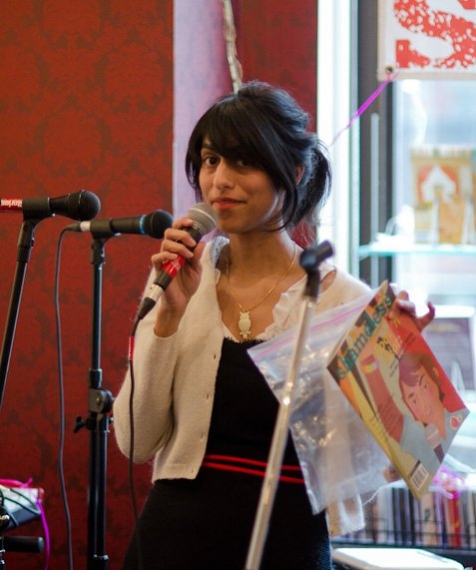SHAMELESS

By Shameless editor and art director Sheila Sampath for The Site Magazine
For this online version of The Site Magazine, we wanted to challenge our internal ideas about feminisms and built space by inviting the editors of other feminist-focused independent magazines to talk to us. We asked them to tell us how they think about feminist space and to curate a selection of articles from our print and online submissions. Here, Sheila Sampath, editor and art director of Toronto-based Shameless, offers her thoughts on feminism and making magazines. You can subscribe to Shameless, buy the latest issue (The Do It Yourself, Do It Together Revolution Issue), and see more of what they do on their website. Helena Bahaar or Kabul-based Gellara will curate a second selection in July.
Can you describe your magazine and tell me a bit about what you do?
Shameless is a grassroots, volunteer-run feminist magazine for teen girls and trans youth. Founded by Melinda Mattos and Nicole Cohen, who were studying journalism at Ryerson at the time, Shameless was started to provide an alternative to typical teen magazines.
I joined Shameless is 2006 as Art Director—my background is in DIY publishing, community organizing, and community-centered design—and worked in that role under the founding editors for about a year before editorial and publishing leadership shifted to a new team. During that time, I really came to question Shameless’ positioning as a feminist magazine: What is our responsibility to anti-capitalist and decolonial politics? What does it mean to publish a magazine for teens facing multiple and overlapping oppressions? How can we use this space to challenge and re-imagine a cis- white- hetero-centric politic?
In 2010, I inherited the magazine and, along with a small group of people, re-wrote the mandate and hired a new staff. We no longer took the word “feminism” for granted, but rather, attempted to define it: feminism as anti-racism, anti-capitalism, Black liberation, decolonization, self-determination, trans-inclusion, queer liberation, disability justice… feminism as intersectional, self-reflective, iterative, and as practice.
My role at Shameless now is to provide editorial oversight to the print magazine and the blog, art direct and layout the magazine, co-facilitate the Youth Advisory Board, and generally make sure all staff feel supported and held in their work. It’s a role that’s centred around accountability: to our editorial mandate, our readership, our communities, and to each other.
The current issue of Shameless is The Do It Yourself, Do It Together Revolution Issue. Photograph by Wesley Fok
Do you think of your magazine as doing feminist work? How so, and how does it fit with your overall objectives?
For sure. I think we have to talk about what a feminist work is. One part of that is working towards shared goals—decolonization, anti-capitalism, self-determination, liberation, and justice. But as we keep our sights set high, we also have to engage in feminist processes of working, ones that allow us to live this world speculatively as we organize. To me, these processes are rooted in intuition, empathy, care, and a deep investigation into the nature and possibilities of the self. These process are iterative, self-reflective, thoughtful, and sometimes messy.
I’m proud of the feminist work that Shameless is doing—not just when I see the product of that work, a magazine that holds space for visibility, imagination, and connection—but when I reflect on our process. All of us at Shameless are committed to practicing a culture of care in our work, which means creating spaces for work that allow us to be our whole, complex selves, and nourishing genuine friendships and intentional community through this process. Magazines are inherently iterative in nature—when you’ve completed an issue, there is another one to get started on, providing opportunities for growth as our own politics grow in nuance and our connections deepen. The work is both inspiring and limitless.
Do questions of gender and space come up in your work and in the pieces you publish? Where, how, and in what forms?
At its core, Shameless is about creating and nourishing spaces—spaces to be visible and to be safe, spaces that account for the needs of different kinds of bodies. In its pages, Shameless is a space for writers and artists with lived experience to connect to each other and to participate in a form of intergenerational work. Occasionally, these spaces are physical—launch events, workshops, meetings—but more often, they are metaphorical.
Why did you choose the pieces that you did?
I was particularly drawn to work that explores the connections between us (Between Women), self-reflection (Remembering What is Not Gone), and our intimate relationships with land and our accountability to our communities, ourselves, and our ancestors (Indigenous Perspectives on the Notions of Architecture). The deeply personal, and how it’s connected to the vast political. The pieces that I chose do that beautifully, from a place of conscientiousness and nuance. They highlight the importance of healing in feminist process and politic—relations, selves, and the land.






